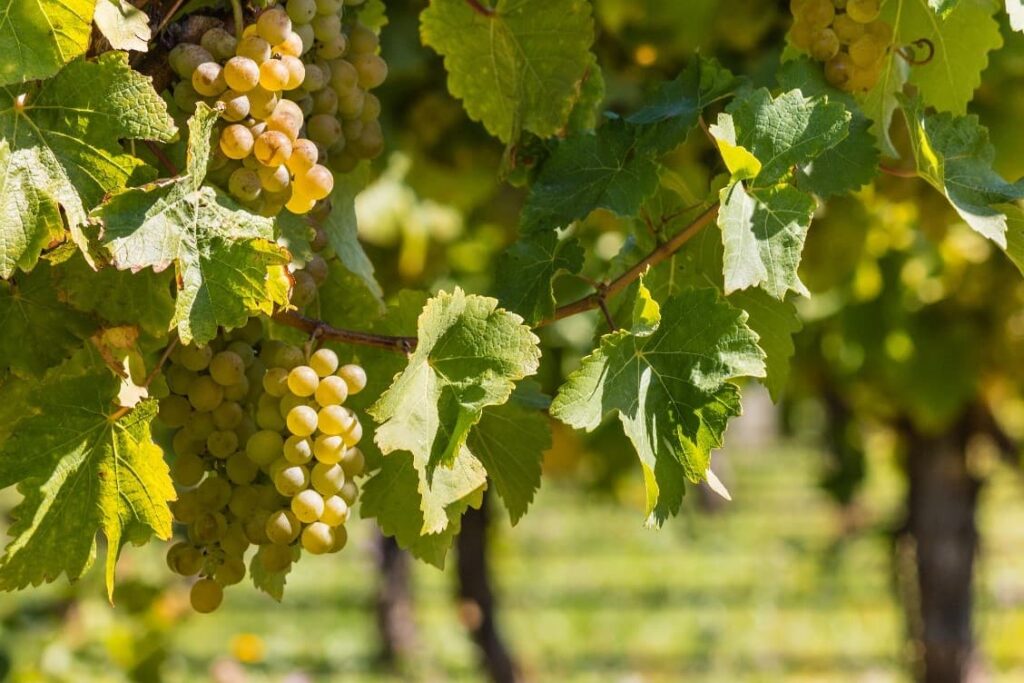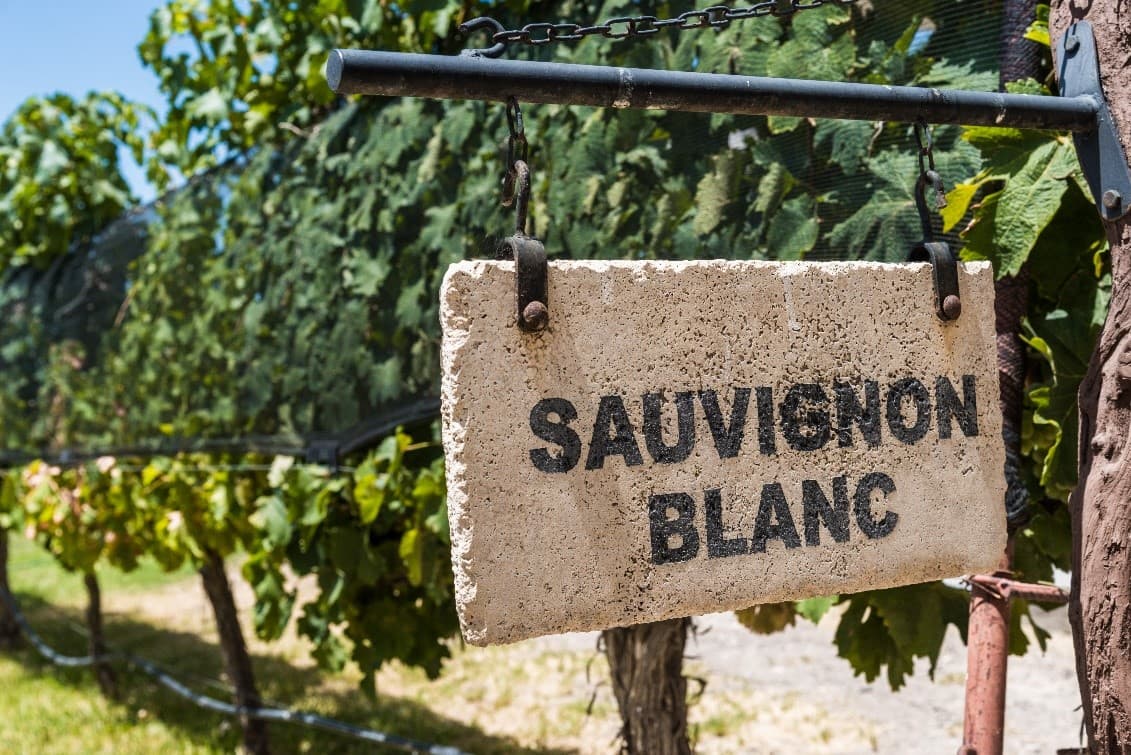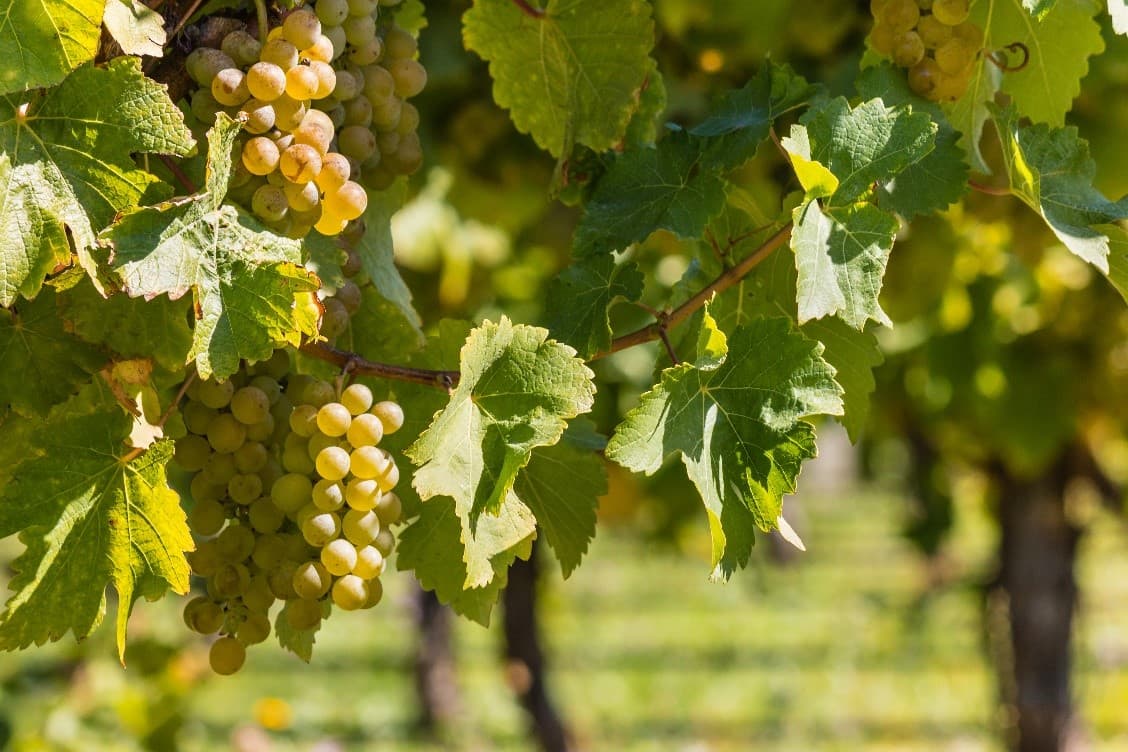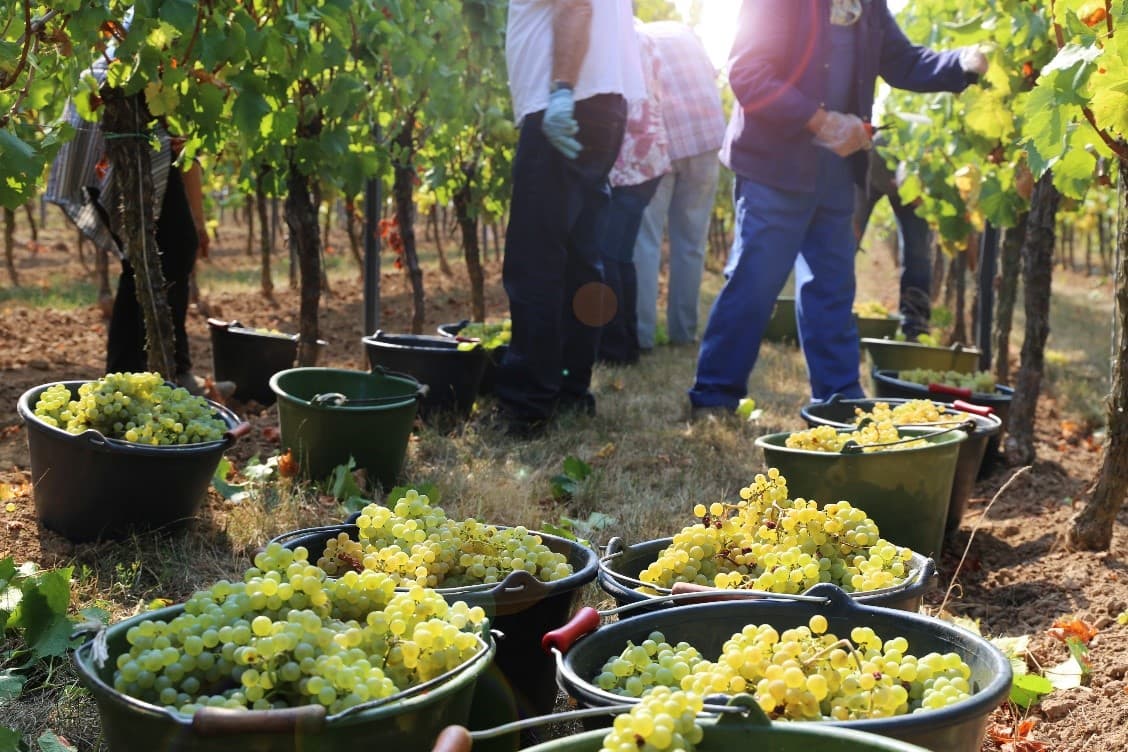
How do you choose a Sauvignon Blanc? | A guide to buying white wine

Sauvignon Blanc is a vastly diverse grape variety, open to various interpretations depending on the climate, terroir, and winemaking . Its ancestral home is the Bordeaux region, where Sauvignon Blanc yields piercingly aromatic, fruity whites – normally unoaked. This represents one end of the spectrum. The other is Pessac-Léognan in Bordeaux, where Sauvignon Blanc (often blended with ac-button-container) Sémillonis aged in wood to produce full-bodied, opulent whites that can age for many years. Today, the grape variety is synonymous with New Zealand – especially Marlborough Sauvignon Blanc wines.
This guide will explore the main characteristics of Sauvignon Blanc, including the most popular regions where it is planted, and how it is produced.
Click on a link to jump to that section:
What kind of wine is Sauvignon Blanc?
One of the world’s most popular grapes is renowned for its aromatic, grassy-to-tropical white wines. Consumers adore the style, partly because Sauvignon Blanc is so utterly refreshing on the palate. Literally translating to “The Wild White”, Sauvignon Blanc is also very food-friendly and, like rosé, is enjoyed year-round. It is green-skinned and thrives in many different countries, producing excellent wines in Australia, Chile, South Africa and, of course, New Zealand.

In many regions, Sauvignon Blanc is produced as a single-varietal. But its ability to blend well with Sémillon in Bordeaux is long-established, used to make both dry and sweet wines.
Browse through our blends of Sauvignon Blanc and Sémillon range here.
Sauvignon Blanc wines from the Bordeaux region are typically aged in oak; these richly textured and smoky whites can rival top-end Chardonnay’s depth and complexity. Expect primary flavours of gooseberry, honeydew, green apple, grapefruit and white peach.
Browse through our range of Sauvignon Blanc wines here.
Sauvignon Blanc by region
Sauvignon Blanc is produced across the world, including Chile that produces Sauvignon Blanc with crisp citrus acidity and herbal tastes, and in California, where the white wine displays aromas and flavours of lime, grapefruit and melon. Other popular regions include:
France
In France, few would deny that Sauvignon Blanc yields spectacular wines in the Loire Valley. The most famous appellations (Pouilly Fumé) and Sancerre) are renowned for their aromatic, mineral-infused expressions of the grape variety. The secret to their meteoric success is the terrain and maritime climate; the benefits of terroir culminating in white chalky soils. Indeed, Sauvignon Blanc has a real affinity with calcareous terroir, producing very elegant, tense, and precise wines.

Historically, oak was rarely used to make either Sancerre or Pouilly-Fumé. However, certain wineries now age their top cuvées in barrique. The region of Touraine, situated to the west of Sancerre, is now a reliable source of fruity (and good value) Sauvignon Blanc wines, which are generally unoaked.
The Bordeaux tradition, however, emphasises a harmonious union between Sauvignon Blanc and Sémillon. This age-old recipe is responsible for Bordeaux’s most expensive white: Chateâu Haut-Brion Blanc. It is made in Pessac-Léognan, where other leading wineries such as Domaine de Chevalier and Smith Haut Lafitte produce exceptional wines that showcase an aroma of honeysuckle, lightly browned toast, and stone fruit. One of the most prestigious single-varietal labels is made at Chateâu Margaux: Pavillon Blanc. It offers a beguiling depth of flavour.
Browse through our range of French Sauvignon Blanc wines here.
New Zealand
Although New Zealand exports a broad palate of grape varieties, its trademark remains incredibly aromatic, Sauvignon Blanc. The style’s intense fruit and crisp acidity has made it popular with wine drinkers around the world, reaching an apogee in the Marlborough region of New Zealand’s South Island. And yet, there are real variations among leading brands; the differences lie in the vineyard, climate, and winemaking. For example, Marlborough’s cooler Awatere sub-region produces herbaceous and minerally SB, in contrast to the riper style of the Wairau zone, with fruit flavours of gooseberry, passionfruit and nectarine.
Likewise, the more inclement climate of Nelson (west of Marlborough) yields subtle wines that invoke Sancerre in their grassy and blackcurrant leaf aromas. Emulating the approach in Bordeaux, certain wineries ferment and age their wines in oak to add structure and complexity.
Browse through our Sauvignon Blanc range from New Zealand here.
Australia
Australia’s international reputation was built on Shiraz and Chardonnay wines: rich and fruit-forward. Yet there are several cool-climate regions, dotted across the country, that are ideally suited to producing fresh and fragrant Sauvignon Blanc. Adelaide Hills in South Australia was the first to win acclaim for its citrus-fresh Sauvignon – now the region’s top white variety. Victoria’s Mornington Peninsula is another reliable source of exceptional wines; a facsimile of Bordeaux Blanc rather than Sancerre.
Meanwhile, in Western Australia, the wineries of Margaret River, specialise in Sauvignon Blanc and Semillon blends; Moss Wood produces popular wines from this region. These wines produce intense, tropical fruit-flavoured whites that are utterly exquisite with sushi and sashimi. Moss The region’s maritime climate and gravel/ironstone soils produce bottled magic – redolent with the smell of oyster shells.
Browse through our Australian Sauvignon Blanc range here.
Sauvignon Blanc viticulture & winemaking
Sauvignon Blanc tends to thrive in regions with a temperate climate and calcareous soils. However, if the variety is grown in too warm a climate, it can lose its characteristic pungency and yield anodyne dross. Moreover, it is prone to cropping at high yields, unless its tendency to excessive vigour is controlled by judicious pruning. Sauvignon Blanc buds early and ripens late, increasing the risk of mildew during wet weather.
Yet, its berries contain a generous volume of the organic compound known as methoxypyrazine – pyrazine for short. This aromatic compound is responsible for the grassy/herbaceous flavours that refresh your palate with inimitable panache. To preserve these aromas, many producers advocate a reductive environment (exclusion of oxygen) when making their wines, known as protective handling. Crushed grapes are cooled to protect them from oxidation, before undergoing fermentation in stainless steel (typically at under 16 °C) to fashion a very fruity and ‘clean-cut’ style of white. This winemaking paradigm is often observed in the vineyards of Marlborough, Chile, Adelaide Hills and Touraine.

Bordeaux Blanc from a less exalted appellation may well follow this approach: single-varietal wines are made relatively quickly and painlessly. Lees stirring (mixing dead yeast cells into the wine) is increasingly employed to enhance texture and richness.
Browse through our range of white wines here.
How do you choose Sauvignon Blanc wines?
It depends on the wine and the occasion. Good Sauvignon Blanc is made the world over, although the most pungent expressions tend to emanate from Marlborough. A quintessential example from a ripe vintage will showcase gooseberry, pineapple, and lychee flavours – a fruit salad bonanza. However, if you desire a more subtle interpretation (aromas of capsicum and blackcurrant leaf) of this malleable grape, explore the wines of Entre-Deux-Mers, Graves and the Loire Valley.
As a general rule, serve your white wine chilled (10 – 12°C) and enjoy it young.
Frequently asked questions
What food should you pair Sauvignon Blanc with?
Sauvignon Blanc is heaven in a glass during a warm summer evening, paired with goat’s cheese, shellfish and tempura. Meanwhile, Sauvignon/Sémillon blends from Bordeaux and the New World can improve in bottles for over a decade. Roast turbot and pan-Asian cuisine have an affinity with such wines.
What is a good alternative to Sauvignon Blanc?
Spain’s Albariño is an excellent alternative to Sauvignon Blanc: a fragrant, unoaked style of white. Italy’s Greco di Tufo and Pinot Grigio are also strong candidates.
Browse through our Albariño range here.
What to read next
New Zealand Sauvignon Blanc | Marlborough Wine Region
Find Margaret River Sauvignon Blanc | Western Australia Wine




